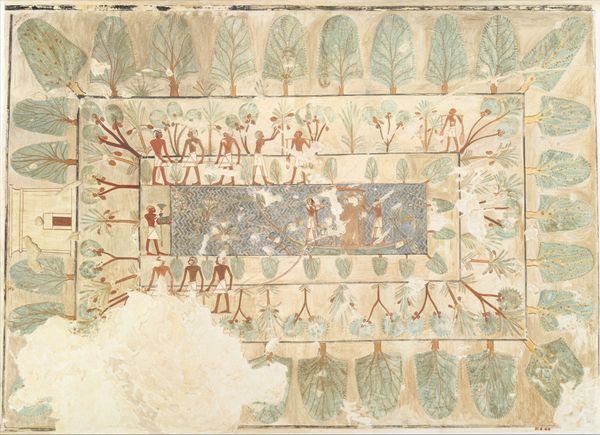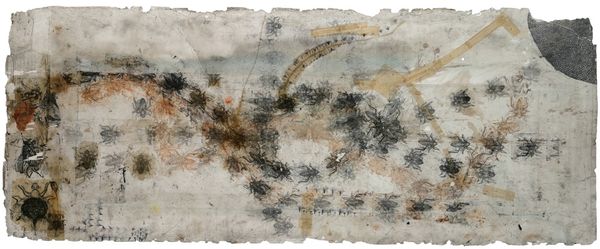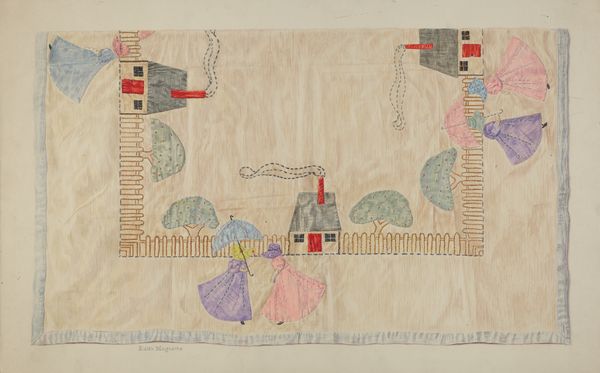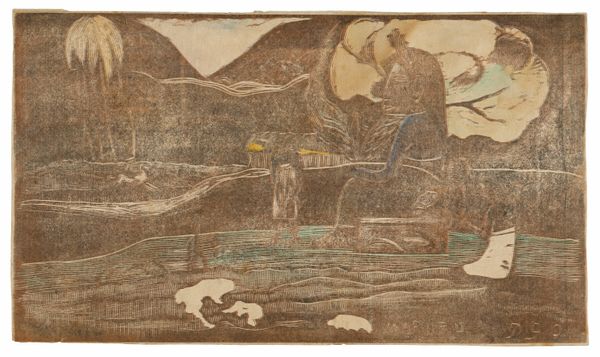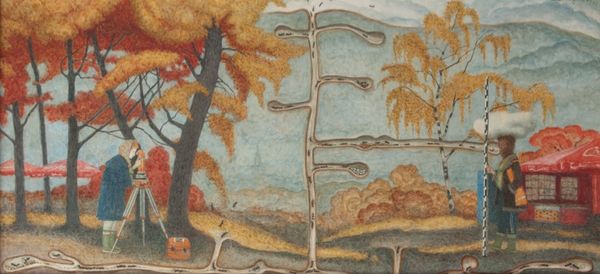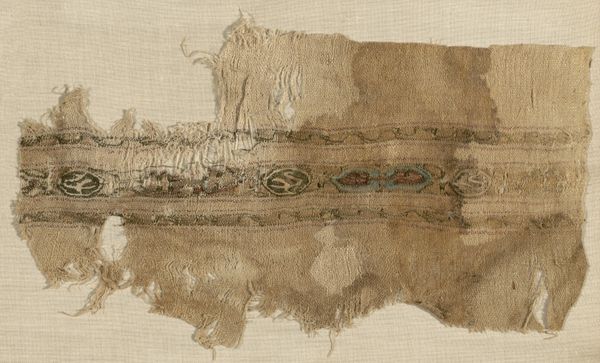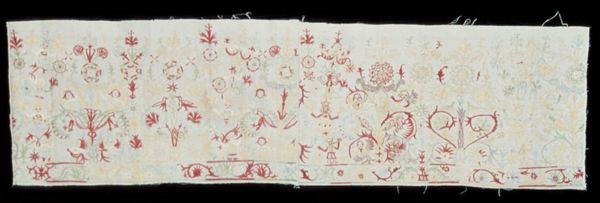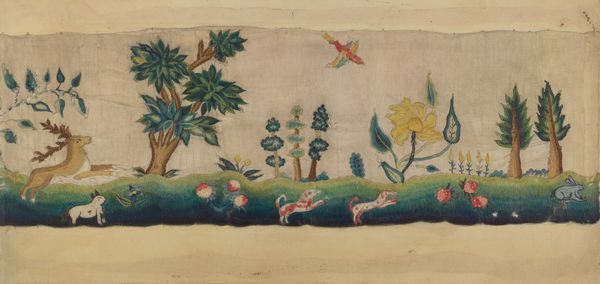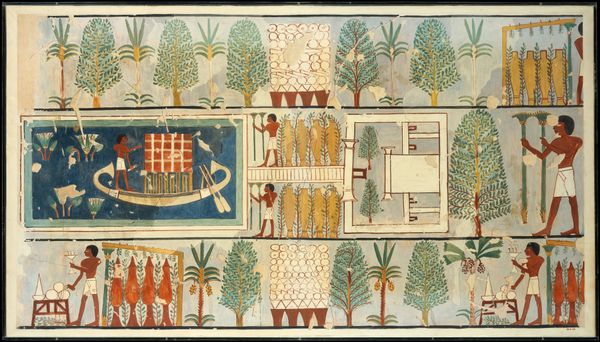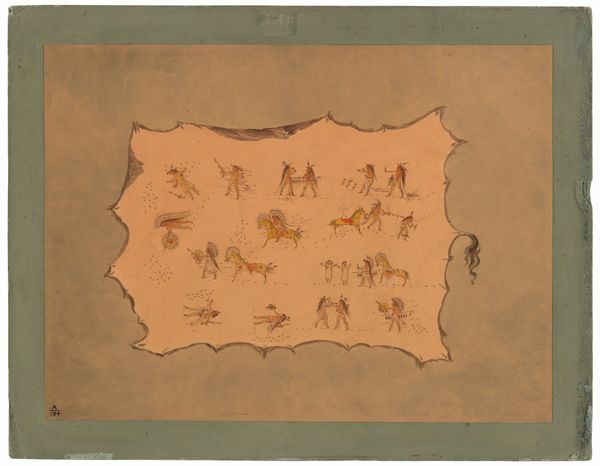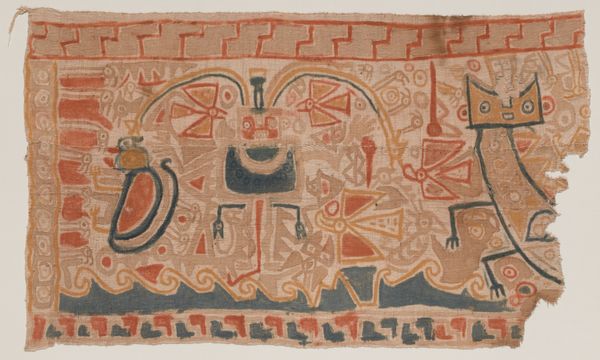
drawing, ink
#
drawing
#
byzantine-art
#
medieval
#
ink
#
geometric
#
history-painting
#
miniature
#
calligraphy
Copyright: Public domain
Editor: This is "Prologue. On the Church. The map of the world" created around 975 by Ende. It's a drawing, with ink, resembling a miniature map, maybe for a book. I'm struck by how geometric the landscapes look, like stylized mountains. What do you see in this piece that connects it to the bigger picture, symbolically speaking? Curator: It's tempting to call it just a map, but consider what maps *meant* then. Maps weren’t objective representations; they were infused with cultural memory, religious narratives, and beliefs about the cosmos. What does the centrality of the church imply, in relation to the world's design? Editor: Maybe that the world revolves around it, spiritually speaking? Curator: Exactly. And notice how the geographical features are rendered. Those mountains, rivers... They aren't just physical features, they are symbols invested with meaning. What historical events or ideas might these stylized landscapes represent? Or perhaps, what's absent? Editor: I hadn't thought about absences. It feels like a curated worldview, not a literal one. Curator: Precisely. This map isn’t trying to be a photograph of the world. It’s more like a visual sermon, embedding a very particular ideological perspective in something that appears to be about geography. Even the calligraphy has weight; notice the curves and how they define cultural memory. What psychological effect might that have had on the people who saw it? Editor: I suppose it creates a sense of order and permanence in the world. A reassuring, symbolic image of stability? Curator: That’s very astute. We’ve touched upon just a bit of how a medieval map can function as both a piece of art, cultural memory, and a persuasive worldview all at once. Editor: I'll never look at a map the same way again! It's incredible how much symbolism is packed into such a seemingly simple image.
Comments
No comments
Be the first to comment and join the conversation on the ultimate creative platform.
